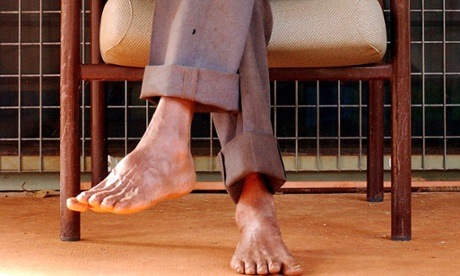
Indigenous Australians seek aged care services at just over one-third the rate of the wider population, a Productivity Commission report has found.
The report found the gap was even wider when it came to accessing information services on ageing and aged care.
Nationally, 18.5 Indigenous people per 1,000 used aged care residential services, compared with 51.1 per 1,000 for the wider population.
Indigenous Australians typically require aged care facilities earlier due to higher rates of disability and chronic disease. Because of this, the commission collects data for Indigenous people in aged care from the age of 50, which is 15 years lower than the wider community.
The proportion of Indigenous people seeking residential aged care in the Northern Territory is higher than the national average at 32 per 1,000, but still not on par with the national average for the wider Australian community.
However, nationally the average rate of Aboriginal and Torres Strait Islanders accessing home-based aged care services was higher than in the wider community – 22.1 per 1,000, compared with 17.2.
Lisa Briggs, the head of the National Aboriginal Community Controlled Health Organisation (Naccho), said the statistics on homecare were only partially due to cultural factors, such as the role of elders and maintaining kinship bonds.
The figures highlighted the institutional barriers faced by Indigenous people seeking residential aged care, Briggs said.
“Government and aged care providers haven’t really been planning for this because we haven’t lived that long,” Briggs said, noting the gap in life expectancy between Indigenous and non-Indigenous Australians.
Naccho has had talks with the minister for ageing, Mitch Fifield, on how to close the gap in aged care for Aboriginal and Torres Strait islander people.
State and federal governments spent an average of $2,828 per person on residential care services in 2013-14, the report said. The NT spent much less, only $1,130 per person.
The gap is even wider when it comes accessing government information on aged care.
The report measured the rate at which Aboriginal and Torres Strait Islander people contacted commonwealth respite and carelink centres, which provide information on costs, eligibility and access for community services.
Just over 26 per 1,000 Indigenous people accessed the service, compared with 93 per 1,000 in the wider population.
Michael O’Neill from National Seniors Australia said those figures were symptomatic of a broader problem of “inadequate communication” between governments and senior Australians.
He said changes to government policies affecting older Australians were not always communicated well with key stakeholders.
